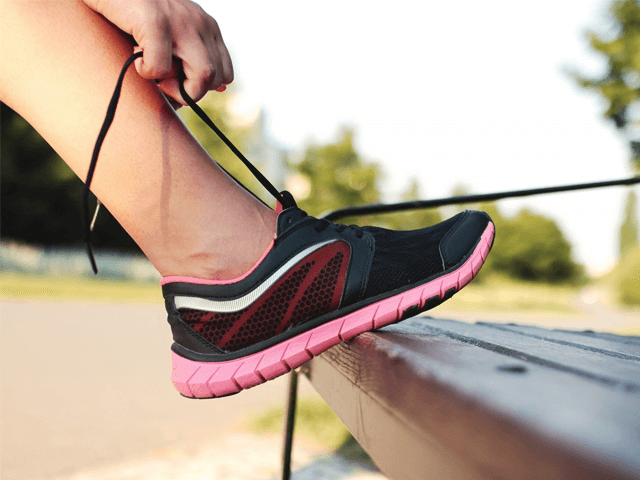Everyone loves a pair of killer heels, and for a special occasion, there’s no better way to accentuate your shapely legs. But an astounding 73% of American women admit to regularly wearing shoes that have caused them harm. Poorly fitting shoes can lead to nasty conditions such as hammer toes, bunions, ingrown toenails, and plantar fasciitis. They can also just put you at a higher risk of injuring yourself and if not addressed can lead to requiring regular rehab and physiotherapy later in life. To make matters worse, problems caused by wearing high heels aren’t just limited to your feet. When we wear heels, our body is unnaturally tilted forward, which can lead to hip and back problems as well. So how do you approach the task of choosing shoes that keep your feet healthy?
- Buy your shoes later in the day
You’d be amazed by how much your feet spread and swell throughout the day, so leave your shopping spree until the afternoon when your feet will be at their largest. Consequently, your feet won’t be pinched and squeezed later in the day.
- Wear the same socks/hosiery
There’s no point in going out to buy comfortable walking shoes in gossamer-thin stockings, only to change into thick socks when you actually wear the walking shoes. And it’s no good sporting woolly socks when you’re trying on court shoes. To get the best fit, make sure you wear the same thing that you’ll be wearing when you actually use the shoes.
- Have your feet measured
The only way to get properly fitting shoes is to have your feet measured at the store. Your feet can also change over time, so don’t assume that one fitting will do—stay up-to-date by having them measured each time you visit.
- Get both feet measured
Two-thirds of adults have feet that are different sizes, so have the salesperson measure both your feet to ensure an accurate fit. If there’s only a small difference, then it won’t do any harm to buy shoes to match your larger foot, but if there’s a significant difference then you may need shoes in two sizes.
- Think about the design
Pointed shoes can push your toes out of place, as well as being painful to wear. Shoes without backs (e.g. flip-flops or mules) can cause muscle strain in your legs if worn for too long. To keep your feet healthy, choose shoes that fit your natural outline, cradling and supporting your feet (especially your arches).
- Choose the best material
It’s essential for feet to breathe easily, even during cold weather, otherwise they can get hot and sweaty. Fungal infections (like athlete’s foot) thrive in warm, damp conditions and can be tricky to treat. Natural materials like leather and suede are generally better than synthetic ones.
- Check the soles
It’s important to have shoes that won’t easily slip when you’re on smooth ground, so take a look at the soles and see if they have a good tread and will grip the ground well. Slippery soles will not only make you feel insecure when walking, but they could cause an accident.
- Check the insides
Raised seams or other protrusions inside the shoe might rub against your feet and cause painful blisters. You may have been told that new shoes need “breaking in” but in reality you can damage your feet with shoes that rub, so look for a smooth interior
- Choose the best fastenings
If you have problems with the agility of your hands, you may prefer a Velcro fastening or slip-ons over lace-up shoes. Be sure you can put your shoes on quickly and easily, and make sure slip-ons aren’t too loose or they might cause you to trip and fall.
- Walk around in your shoes before you buy
Don’t assume that because the shoes are the right size they will fit you perfectly. Sizing may vary between manufacturers, and the overall design of the shoe will also contribute to its wearability. Wear both shoes, and walk around in them to check they don’t pinch or slide off easily, and also make sure you have at least half an inch of room for your toes.
This may seem like a lot to remember, but it’s mostly common sense, and looking after the health of your feet will make walking a pleasure for many years to come.

